| Once a fief of the counts of Blois, the town rose to
prominence as a royal domain in the 15th century, retaining its historic façades
and refined atmosphere to this day. Architectural interest abounds in Vieux
Blois, the hilly, partially pedestrianized quarter enclosed by the château,
cathedral and river. Set back from the north bank of the river, the Château de
Blois was the principal royal residence until Henry IV moved the court to Paris
in 1598 - Louis XIV's creation of Versailles was to mark the final eclipse of
Blois. The château's four contrasting wings make a harmonious whole. The Salle
des Etats, the only part of the building surviving from the 13th century, housed
the council and court, and is the best preserved Gothic hall in the Loire. The
adjoining late 15th century Louis XII wing infuses Gothic design with
Renaissance spirit, sealed with the king's porcupine symbol and motto:
"From near and afar, I can defend myself". The 16th century Francois I
wing is a masterpiece of the French Renaissance containing a monumental spiral
staircase in an octagonal tower. By contrast, the 17th century Gaston d'Orléans
wing is a model of Classical sobriety. Blois is authentically furnished and hung
with paintings portraying its troubled past. These include a graphic portrayal
of the murder of the Duc de Guise in 1588. Suspected of heading a Catholic plot
against Henry III, he was stabbed to death by guards in the king's chamber. The
most intriguing room is Catherine de Medici's study, its walls containing 237
secret cabinets, full of jewels, state papers and potions. |
 |
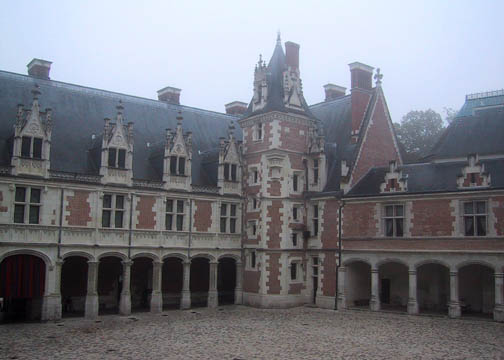 |
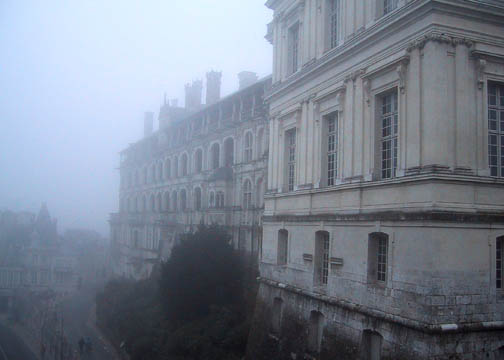 |
| The Louis XII façade conjures up the
first castle as it appeared in 1501. This building was raised in three years and
carries the hallmark of Renaissance Italy with its gallery, adornments and
gardens. However, it is still laden with medieval features, especially the
mythical and animal gargoyles found everywhere on the other side of the façade.
Built in brick and stone, this wing is unmistakably Flamboyant in style. A
discreet introduction of an "Italianate" decoration can be found intermixing
with the predominantly Northern influences. The Fine Arts Museum occupies the
former royal apartments on the first floor. The gallery extends to the right
along the Saint-Calais Chapel to form the latest wing of the castle. The statue
of Louis XII mounted on his horse which appears above the main door on the other
side of the building is a 19th century version based on the 1682 drawings by
André Félibien, and replaces the
former statue destroyed during the Revolution in 1792. |
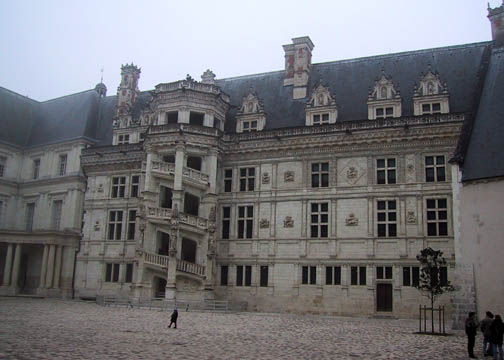 |
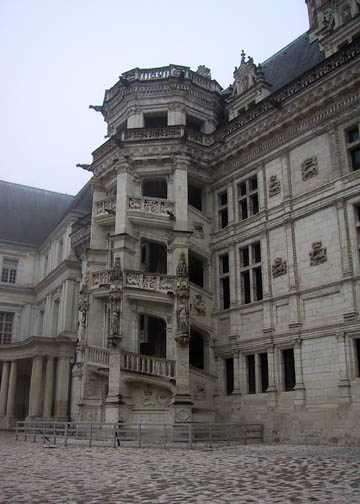 |
| François I, the young hero of Marignan,
fascinated by Italy, did not reign much from Blois contrarily to his predecessor
Louis XII, preferring Chambord and Fontainebleau. However, the works which he
carried out on what was first his family home through his marriage to Claude of
France are considerable. Although the façade overlooking
the courtyard which bears his name (above) still displays the characteristics of
a medieval dwelling, it has been transformed by its sculpted adornments and the
sumptuous projecting staircase tower, typical of the architecture of the early
French Renaissance. |
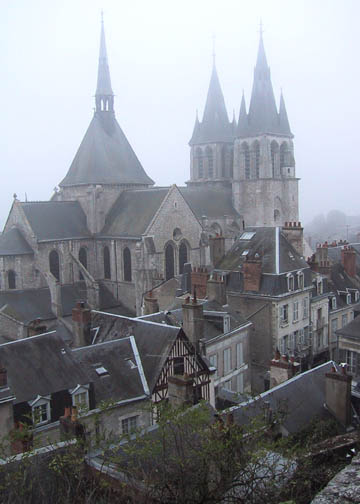 |
| Open daily all year round except 25 December and 1 January, varying closing
times. Tel.: 33+ (0)2 54 74 16 06 |





